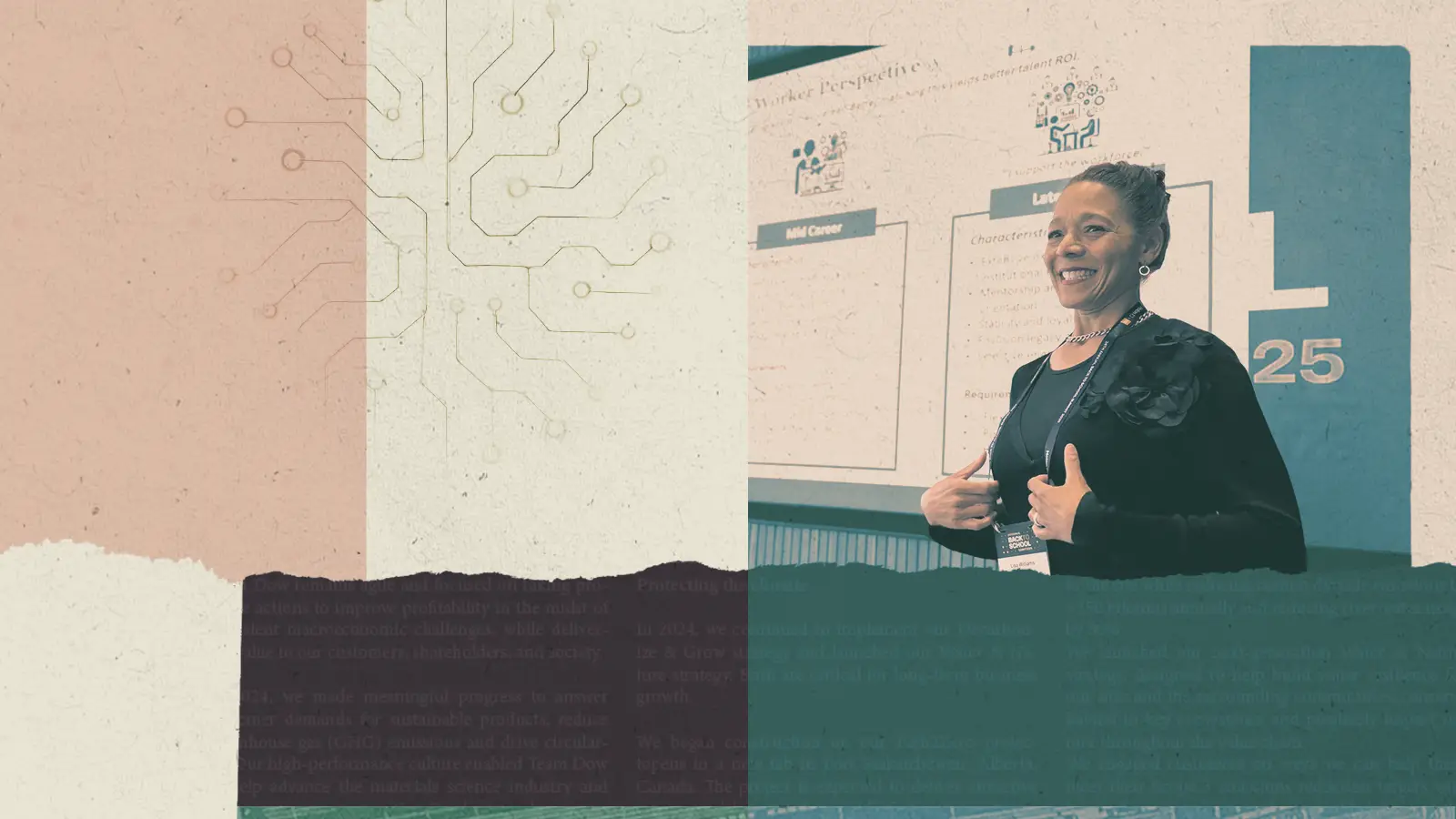
Oct 21, 2025

As we continue our conversation about the latest Advanced Manufacturing Skills Leadership Council, a convening of global leaders and experts surfacing some of the most pressing challenges in advanced manufacturing talent, we turn our focus to one of industry’s most enduring innovators: Dow.
Our second Dispatches from the Field series highlights insights from Lisa Williams of Dow, who has over 27 years of experience at the Fortune 500 company and currently leads workforce strategy as the Senior Director of Talent Strategy. As a company that began more than 125 years ago, Dow has had to remain agile and adaptable across all fronts. Williams’ presentation centered on Dow’s evolving manufacturing talent strategy, a framework that combines business strategy, workforce planning, and employee experience into a holistic ecosystem across career phases.
In this piece, we dive into key themes from the session, along with direct insights from Williams.
———
Through Dow’s Manufacturing Talent Strategy Ecosystem, Williams outlines that sustainable success is found when there’s clear alignment between talent teams. An imbalance across strategy, workforce planning, technology, and collaboration will limit predictability, performance, and employee engagement, while alignment enhances talent ROI and resilience.
Integral to the ecosystem is the importance of tailoring talent strategy by career phase. These can be defined in the following three milestones:
Each phase brings unique characteristics and needs, meaning employees require tailored approaches to recruitment, development, and retention. Recognizing these shifting perspectives, Dow is building a culture that puts continuous learning, cross-generational mentorship, and adaptability at the center of their strategy.
Dow’s workforce strategy includes a Talent Enablement Plan designed to create a more responsive and resilient talent ecosystem. Williams shared how this approach integrates human leadership, data insights, and AI to connect business strategy with people strategy better.
By combining traditional HR practices with organic and AI enablers like self-learning platforms, evolving work assignments, and a “skills in action” talent marketplace, Dow is shifting from static roles to dynamic, skills-based development. The results: improved productivity, stronger technology adoption, clearer visibility into skills gaps, and a better overall experience for employees and leaders alike.
———

Can you tell us a little about yourself and your role?
I am the Sr. Director for Talent Strategy and Employee Experience at Dow. I’m responsible for developing the talent strategy and leveraging across our talent portfolio of technicians, operators, engineers, production directors, expertise centers, leaders, and SMEs.
What led you to participate in the Council?
I was invited by Imran [at inSpring]. I was one of few companies attending, but I soon realized the wealth of knowledge and perspective this council offers that is critical for company talent strategists and managers like me to have and tap into for better ideas and collaboration.
From your perspective, what are the most pressing workforce challenges in your organization and sector right now?
We lack the robust STEM talent pipeline we need, both in quality and quantity, to support how our workforce needs to evolve with technology in the near and far future. We must reformulate how we think about the work that is required, the skills and experiences required to do that work and open the structures of roles and teams to change and evolve into new ways of working. Jobs perceptions about experience needs, skill relevance, old designations of white and blue collar, and some other antiquated descriptors of our workforce need upgrading. I offer leaders in organizations will have the biggest challenge trying to architect this change model for their teams and successful application of their own durable skills to make it successful.
What advice would you share with other leaders tackling similar challenges?
Don’t do it alone. Find the community and NEW resources being developed to help meet these challenges with innovative solutions and approaches for the future. Remember, half of what you know now is likely no longer relevant for the future. Intentionally invest in your own re/up-skilling and embrace durable skills and technology to help lead your team to work better today and set the foundation for tomorrow.
———
Dow has led the materials solutions industry on the global stage for over a century through innovation and sustainability—and focusing on cultivating a talent strategy ecosystem. inSpring complements this approach by accelerating a company’s workforce strategy through collaboration and execution of talent development, retention, and mobility programs to build a more resilient workforce. Both perspectives share a belief that the future of industry depends on skills, equitable access, and collaboration.
Dow’s example shows the power of alignment inside a company.
At inSpring, we’re bridging talent and industry to build the future of workforce. Learn more about how inSpring can support your talent strategy.